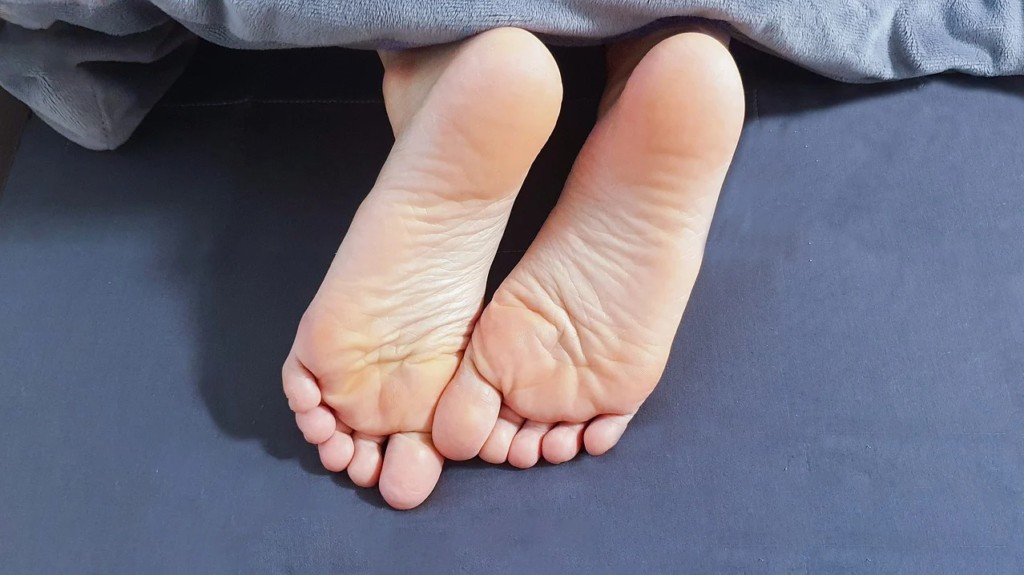 Close-up view of peeling skin on the sole of a foot, highlighting dryness and cracking, common symptoms of foot skin issues.
Close-up view of peeling skin on the sole of a foot, highlighting dryness and cracking, common symptoms of foot skin issues.
Experiencing peeling skin on your feet can be unsettling and uncomfortable. It’s a common concern that many people face, often leading them to wonder, why is my feet peeling? Whether it’s a minor annoyance or a persistent issue, understanding the reasons behind peeling feet and knowing how to address it is crucial for maintaining healthy and comfortable feet. This article will explore the common causes of peeling skin on feet, from simple dryness to underlying medical conditions, and provide effective at-home treatments and guidance on when to seek professional medical advice.
Recognizing the Symptoms of Peeling Skin on Feet
Peeling skin on the feet can manifest in various ways, and recognizing the symptoms is the first step towards understanding the cause. Common signs include dryness, cracking, and visible peeling of the skin, particularly on the soles, heels, around the toes, and the balls of the feet. You might notice:
- Flaky or shedding skin
- Cracked heels or fissures
- Dry, rough patches
- Peeling skin between toes
- Redness or itching in affected areas
These symptoms can range from mild to severe, depending on the underlying cause and individual skin sensitivity. Understanding these symptoms helps in identifying potential triggers and choosing the right course of action.
Common Causes Behind Your Peeling Feet
Several factors can contribute to peeling skin on your feet. Identifying the specific cause is essential for effective treatment. Here are some of the most common culprits:
-
Athlete’s Foot (Tinea Pedis): This highly contagious fungal infection thrives in moist environments, such as sweaty shoes and socks. Athlete’s foot often causes peeling, itching, and burning, especially between the toes and on the soles of the feet. The fungus attacks the outer layers of the skin, leading to characteristic peeling and cracking.
-
Eczema (Atopic Dermatitis): Eczema is a chronic inflammatory skin condition that can cause dry, itchy, and peeling skin anywhere on the body, including the feet. It’s often linked to genetics and allergies. Foot eczema can result in significant peeling, redness, and discomfort, making walking painful.
-
Sunburn: While often overlooked, the bottoms of your feet are susceptible to sunburn, especially when exposed to direct sunlight or heat. Sunburn damage can lead to red, painful skin that eventually peels as it heals. Walking barefoot on hot surfaces can also cause sunburn on the soles of the feet, resulting in subsequent peeling.
-
Psoriasis: This chronic autoimmune condition can affect the skin on the feet, causing thick, red, scaly patches that may peel. Psoriasis on the feet can be particularly uncomfortable due to pressure and friction from walking. The peeling associated with psoriasis is often more severe and accompanied by thickened skin.
-
Dry Skin (Dehydration and Environmental Factors): Simple dryness, often exacerbated by dehydration, cold weather, or harsh soaps, can lead to peeling skin. Lack of moisture causes the skin to become brittle and prone to flaking and peeling. Genetics can also play a role in predisposing some individuals to naturally drier skin.
Effective At-Home Treatments for Peeling Feet
In many cases, peeling skin on the feet can be effectively managed with home care. Here are some recommended treatments you can try:
-
Gentle Exfoliation with a Foot File: After soaking your feet in warm water for about 20 minutes to soften the skin, use a foot file to gently remove dead and peeling skin. Use the rough side to carefully buff away thicker skin and the smoother side to refine the surface. Avoid over-exfoliating, which can irritate the skin further.
-
Regular Moisturizing: Applying a rich moisturizer daily, especially after bathing or showering, is crucial to keep your feet hydrated. Look for moisturizers containing ingredients like urea, glycerin, or hyaluronic acid, which help to draw moisture into the skin and keep it supple, preventing further peeling.
-
Antifungal Creams for Athlete’s Foot: If you suspect athlete’s foot, over-the-counter antifungal creams or sprays containing ingredients like clotrimazole or terbinafine can be effective. Apply the treatment as directed, ensuring you treat the entire affected area and continue treatment for the recommended duration, even if symptoms improve.
-
Let Your Feet Breathe: Whenever possible, allow your feet to air out, especially after exercise or if you tend to sweat a lot. Wearing breathable socks made of cotton or moisture-wicking materials and alternating shoes can help reduce moisture buildup and prevent fungal infections and excessive skin softening that can lead to peeling.
While these at-home treatments can provide significant relief, it’s important to know when to seek professional help. If your peeling skin is severe, doesn’t improve with home care, or is accompanied by pain, signs of infection (such as increased redness, swelling, pus, or fever), or if you suspect an underlying medical condition, consult a podiatrist.
For persistent or worsening cases of peeling skin on your feet, seeking expert advice is the best course of action. A podiatrist in Mesa, AZ can accurately diagnose the cause of your peeling feet and recommend the most appropriate and effective treatment plan tailored to your specific needs. Don’t hesitate to Schedule An Appointment for healthy and happy feet.

